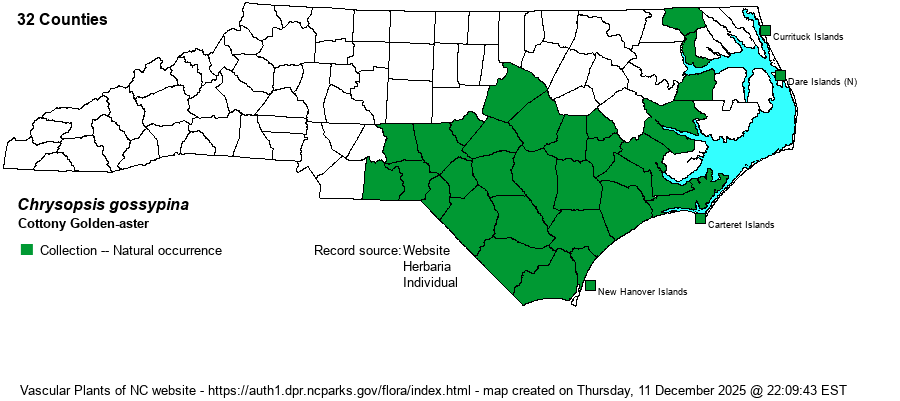Show/Hide Synonym
| taxonName | relationship | relatedTaxonName | relatedTaxonRefText | relComments |
|---|
|
| Chrysopsis gossypina | < | Chrysopsis gossypina ssp. gossypina | Flora of North America (1993b, 1997, 2000, 2002a, 2002b, 2003a, 2004b, 2005, 2006a, 2006b, 2006c, 2007a, 2009, 2010) | | | Chrysopsis gossypina | < | Chrysopsis gossypina ssp. gossypina | | | | Chrysopsis gossypina | < | Chrysopsis gossypina ssp. gossypina | Wunderlin & Hansen Flora of Florida (3) | | | Chrysopsis gossypina | < | Chrysopsis gossypina ssp. gossypina | DeLaney, Wunderlin, & Semple (2003). Key adapted from Semple (1981) and Semple in FNA (2006b). [also see Bradburia, < | | | Chrysopsis gossypina | < | Heterotheca gossypina | Radford, Ahles, and Bell (1968) | (also see C. pilosa) | | Chrysopsis gossypina | < | Chrysopsis gossypina | Gleason and Cronquist (1991) | | | Chrysopsis gossypina | < | Chrysopsis gossypina | Gleason (1952) | | | Chrysopsis gossypina | < | Chrysopsis gossypina | Vascular Flora of the Southeastern States (Cronquist 1980, Isely 1990) | | | Chrysopsis gossypina | > | Chrysopsis longii | Fernald (1950) | | | Chrysopsis gossypina | >< | Chrysopsis arenicola | Small (1933, 1938) | | | Chrysopsis gossypina | > | Chrysopsis decumbens | Small (1933, 1938) | | | Chrysopsis gossypina | > | Chrysopsis pilosa | Small (1933, 1938) | , misapplied | | Chrysopsis gossypina | < | Heterotheca gossypina | DeLaney, Wunderlin, & Semple (2003). Key adapted from Semple (1981) and Semple in FNA (2006b). [also see Bradburia, < | | | Source: Weakley's Flora |
|

